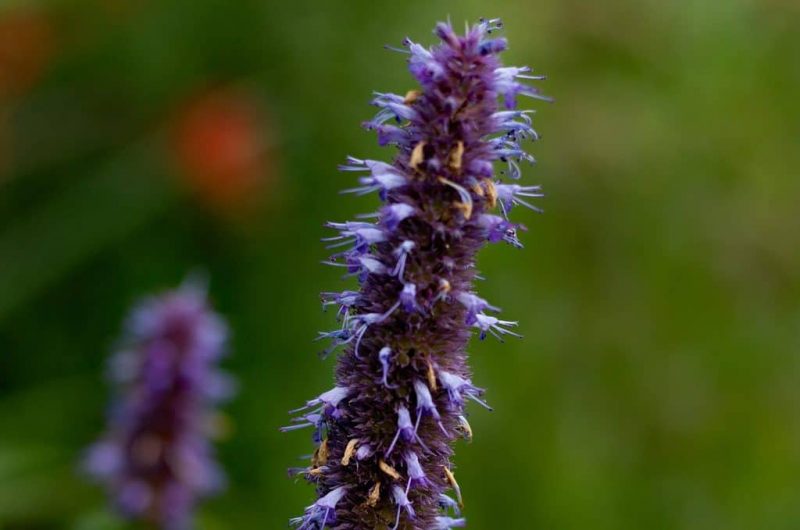If you’re interested in learning how to grow agastache, you’ll be pleased that it only takes three steps. The procedure itself is not meticulous, so you should have this perennial in your garden without any drawbacks. Agastache or Anise hyssop is a clump-forming and aromatic plant with various flower colors that will attract pollinators, making them excellent additions to the garden.
And while agastache grows relatively easily, you can also consider growing these plants in the greenhouse. Those looking to grow agastache for commercial use can benefit in a stable environment like the greenhouse. The consistent indoor conditions will ensure these plants’ productivity and less room for error on your part.

How To Grow Agastache Successfully
Step #1. Sowing
Germinating seeds
You can start agastache from cuttings as some gardeners mentioned it’s possible, but it’s easier and more common to use seeds for this plant. Take advantage of the greenhouse for starting the seeds, so you’re still on schedule but without the risk of frost. Sow agastache seeds in the greenhouse at eight weeks before the last frost date in spring.
You can use a seed-starting formula as the medium and plant the seeds a quarter deep. Make sure that you maintain the soil moisture to encourage germination. Agastache seeds will also respond well to soil temperatures between 70 to 75°F, and you can wait for seedlings to develop after 21 days or less.
While agastache seeds take time to germinate and develop, stable indoor conditions can help them grow as soon as 14 days. Be diligent in maintenance and keep them from harsh conditions. And once they’ve developed, you can transfer the seedlings.
Maintaining seedlings
The seedlings will grow well under fluorescent lights. Ensure that they are 4 inches away from the source and have the bulbs on for 16 hours per day. You can also start fertilizing and transplant the seedlings from cells to pots once they develop true leaves.
At this point, you can harden the young agastache plants and transplant them in the garden. Remember that hardening plants are important before transplanting to avoid stress. Lastly, be wary of frost, and consider moving them indoors again if the nighttime temperatures are freezing.
Step #2. Planting
A useful tip to remember is if the area is feasible for lavender plants, it will be suitable for agastache. Unlike other plants, agastache plants prefer soil that is alkaline and low fertility. They also tolerate drought, but be mindful of having good drainage, improving the soil quality if necessary.
The location itself should be sunny, and you can prepare the ground as you would with other plants. The best time to plant is when it’s not sunny, as heat can lead to transplant shock. Gently remove the plant from its pot, loosen the root ball, and plant it in a hole that’s big enough for it.
Step #3. Maintenance
After planting, you can lightly mulch the top of the soil to keep weeds at bay. This will also help in maintaining soil moisture and temperature, which are essential for plant establishment. Agastache plants can have water once a week when they are just establishing themselves but do so in the morning to guarantee that they’ll dry by evening.
You can also use low rates of slow-release fertilizer to prevent rot and burns when you notice new growth. At this point, the young plants still need protection from challenging conditions. If your area is prone to having harsh sun or extreme winds, it might be better to keep the plants indoors or covered.
Should you deadhead agastache? Agastache can benefit from deadheading, especially if you want to keep them in bloom. Removing the faded flower heads will help the plant focus its energy on flowering.
And in fall, don’t forget to remove the foliage after the frost.
Can You Divide Agastache?
You can divide your agastache early in autumn. This is an excellent practice to keep a tidy set-up when the plant is outgrowing its space. The process is straightforward, and you can treat it as you would when dividing other plants.
Dig the plant and pull it apart into clumps, ensuring that each section should have around three shoots and a root system to guarantee growth. The beauty of dividing agastache is that you can divide it every two to three years. Not only will it create a neater-looking garden, but you can replant these divisions to create more plants.
Conclusion
If you want to have a garden that’s welcoming of pollinators, consider adding hyssops. Learning how to grow agastache is not difficult because there are no special requirements and steps for them. You start the seeds indoors to encourage germination and then transplant them outdoors once the climate is optimal.
The maintenance of agastache is also relatively easy to provide. Water them when needed and feed with a slow-release fertilizer. You may also need to remove the spent blooms to encourage your plants to continue flowering.
More so, you can divide agastache every two to three years and replant the clumps. This helps with cloning your favorite plants, but also in keeping a neat garden. Lastly, always check your outdoor conditions and use a greenhouse for protection when it’s too challenging.
